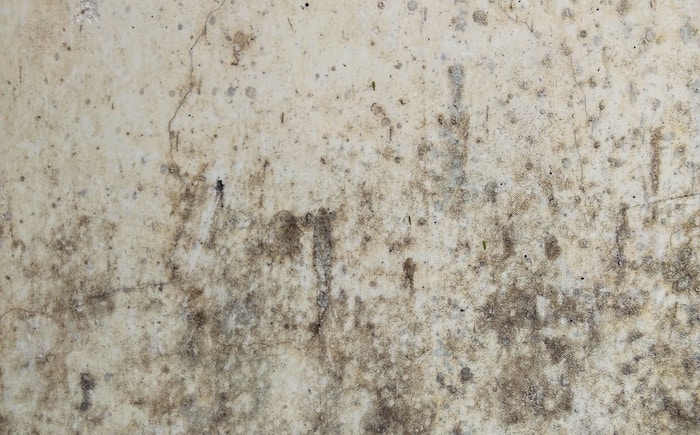Damp and Mould In Kitchen Cupboards

Damp and mould in kitchen cupboards can be a major problem for homeowners, causing unpleasant odours and even health issues.
The kitchen is the heart of any home, and dampness and mould can not only be unsightly but also a health hazard. It is important to understand the causes of damp and mould in kitchen cupboards and how to prevent it from happening.
In this post, we will explore the common causes of damp and mould in kitchen cupboards, their effects, and offer practical solutions to prevent and treat this problem.
What Causes Damp in Kitchen Cupboards?
Dampness in kitchen cupboards can be caused by multiple factors, including:
- Poor ventilation: Poor ventilation in the kitchen can result in a buildup of moisture, which can lead to dampness in the cupboards.
- Leaking pipes: Leaking pipes can cause dampness in the cupboards and can eventually lead to mould growth.
- Condensation: Condensation can occur in the kitchen when cooking or boiling water, and if not properly ventilated, can lead to dampness in the cupboards.
- Water damage: Water damage can occur from a leaky roof or from water entering the kitchen from an adjacent room or area.
- Humidity: High humidity levels can cause dampness in the cupboards, especially in areas where there is poor ventilation.
It is important to identify the cause of the dampness in the cupboards to prevent it from recurring.
If left untreated, dampness can lead to mould growth, which can be harmful to health.
Click here to see our range of DIY Kitchens Online from JMT Trade...
What Causes Mould in Kitchen Cupboards?
Mould in kitchen cupboards is usually caused by excess moisture or dampness. The moisture can come from various sources, including:
- Leaking pipes or appliances: Leaks from pipes or appliances such as dishwashers, washing machines, or refrigerators can cause moisture buildup and lead to mould growth in cupboards.
- Poor ventilation: Poor ventilation in the kitchen can trap moisture and lead to mould growth in cupboards.
- Condensation: Condensation can occur in the kitchen when cooking or boiling water, and if not properly ventilated, can lead to mould growth in cupboards.
- Water damage: Water damage caused by flooding or leaks can also lead to mould growth in cupboards.
Mould can cause health problems such as allergies and respiratory issues, and it is important to address the issue as soon as possible.
Cleaning the affected area with a mould cleaner and addressing the source of the moisture can help prevent mould from recurring.
It is also important to keep the kitchen well ventilated and to address any leaks or water damage promptly.
What Causes Damp Behind Kitchen Cupboards?
Dampness behind kitchen cupboards can be caused by several factors, including:
- Leaking pipes: Leaking pipes can cause water to seep behind the cupboards, leading to dampness.
- Water damage: Water damage caused by flooding or leaks can also lead to dampness behind the cupboards.
- Poor ventilation: Poor ventilation in the kitchen can trap moisture behind the cupboards and lead to dampness.
- Condensation: Condensation can occur behind the cupboards when the temperature difference between the inside and outside of the cupboard is high.
- Poor insulation: Poor insulation in the kitchen walls can cause cold spots, leading to condensation and dampness behind the cupboards.
It is important to identify the cause of the dampness behind the cupboards to prevent it from recurring.
If left untreated, dampness can lead to mould growth, which can be harmful to health.
It is recommended to seek professional help to address the issue as soon as possible.
What Causes Mould Behind Kitchen Cupboards?
Mould growth behind kitchen cupboards is usually caused by excess moisture or dampness.
The moisture can come from various sources, including:
- Leaking pipes or appliances: Leaks from pipes or appliances such as dishwashers, washing machines, or refrigerators can cause moisture buildup and lead to mould growth behind the cupboards.
- Poor ventilation: Poor ventilation in the kitchen can trap moisture and lead to mould growth behind the cupboards.
- Water damage: Water damage caused by flooding or leaks can also lead to mould growth behind the cupboards.
- Condensation: Condensation can occur behind the cupboards when the temperature difference between the inside and outside of the cupboard is high.
- Poor insulation: Poor insulation in the kitchen walls can cause cold spots, leading to condensation and mould growth behind the cupboards.
Mould can cause health problems such as allergies and respiratory issues, and it is important to address the issue as soon as possible.
Cleaning the affected area with a mould cleaner and addressing the source of the moisture can help prevent mould from recurring.
It is also important to keep the kitchen well ventilated and to address any leaks or water damage promptly.
If the mould growth is severe, it is recommended to seek professional help to address the issue.
How To Get Rid Of Damp In Kitchen Cupboards?
Getting rid of damp in kitchen cupboards involves identifying the source of the dampness and taking steps to address it.
Here are some steps to get rid of damp in kitchen cupboards:
- Identify the source: The first step in getting rid of damp is to identify the source of the moisture. Check for leaks from pipes or appliances, water damage, poor ventilation, or condensation.
- Address the source: Once the source of the dampness has been identified, take steps to address it. Repair any leaks, improve ventilation, and address any water damage.
- Remove any standing water: If there is any standing water in the cupboard, remove it immediately and dry the area thoroughly.
- Use a dehumidifier: A dehumidifier can help to remove excess moisture from the air and prevent dampness from recurring.
- Keep the kitchen well ventilated: Proper ventilation is essential to prevent dampness in the kitchen. Open windows, use extractor fans, and keep cupboard doors open to improve air circulation.
- Use a damp-proofing solution: If the dampness is severe, it may be necessary to use a damp-proofing solution to prevent dampness from recurring.
It is important to address dampness in kitchen cupboards as soon as possible to prevent mould growth and other health hazards associated with dampness.
If the issue is severe or you are unsure how to address the problem, it is recommended to seek professional help.
A professional can identify the cause of the dampness and provide a tailored solution to prevent dampness from recurring.
How To Get Rid Of Mould In Kitchen Cupboards?
Getting rid of mould in kitchen cupboards involves identifying the source of the moisture that caused the mould growth and taking steps to remove the mould and prevent it from recurring.
Here are some steps to get rid of mould in kitchen cupboards:
- Identify the source: The first step in getting rid of mould is to identify the source of the moisture that caused the mould growth. Check for leaks from pipes or appliances, water damage, poor ventilation, or condensation.
- Remove the mould: Once you have identified the source of the moisture, it is important to remove the mould. You can use a mould cleaning solution and a scrub brush to clean the affected area thoroughly. Be sure to wear protective clothing and a mask to avoid inhaling mould spores.
- Dry the area: After cleaning the affected area, it is important to dry it thoroughly. Use a fan or a dehumidifier to remove any excess moisture.
- Address the source of the moisture: To prevent mould from recurring, it is important to address the source of the moisture. Repair any leaks, improve ventilation, and address any water damage.
- Keep the kitchen well ventilated: Proper ventilation is essential to prevent mould growth in the kitchen. Open windows, use extractor fans, and keep cupboard doors open to improve air circulation.
- Use a mould-resistant paint: Using a mould-resistant paint on the cupboard walls and ceiling can help prevent mould growth in the future.
It is important to address mould growth in kitchen cupboards as soon as possible to prevent it from spreading and causing health hazards such as respiratory issues and allergies.
If the mould growth is severe or you are unsure how to address the problem, it is recommended to seek professional help.
A professional can identify the cause of the mould growth and provide a tailored solution to prevent mould from recurring.
How To Ventilate Kitchen Cupboards to Prevent Mould and Damp?
Proper ventilation is essential to prevent mould and dampness in kitchen cupboards.
Here are some steps to ventilate kitchen cupboards and prevent mould and dampness:
1. Keep cupboard doors open: Keeping cupboard doors open allows air to circulate and prevents moisture from building up.
2. Use extractor fans: Using an extractor fan when cooking or boiling water can help remove moisture from the air and prevent condensation.
3. Use a dehumidifier: A dehumidifier can help remove excess moisture from the air and prevent dampness in kitchen cupboards.
4. Install ventilation grilles: Installing ventilation grilles in the kitchen walls or cupboard doors can improve air circulation and prevent moisture buildup.
5. Use a moisture absorber: Placing a moisture absorber in the cupboard can help remove excess moisture and prevent dampness.
It is important to keep the kitchen well ventilated to prevent mould and dampness in kitchen cupboards.
Regular cleaning and maintenance can also help prevent moisture buildup and mould growth.
If the issue is severe or you are unsure how to address the problem, it is recommended to seek professional help.
A professional can identify the cause of the moisture buildup and provide a tailored solution to prevent mould and dampness from recurring.
Is it Time For a New Fitted Kitchen? Can You Buy Fitted Kitchens Online?
Yes you can buy fitted kitchens online, but before we go into that, let me ask you something…
Would you rather:
Buy an off the shelf standardised kitchen that isn’t bespoke that lacks customisation and the exact same kitchen can be bought again by someone else. Or…
Build your own customised dream kitchen, that not has the neighbours talking, but it’s also affordable and can fit within your budget?
It’s an important question you ought to think about, because while standardised kitchens are okay, they usually come with their fair share of problems. Like:
- Not fitting in the space you have
- Pieces missing
- Parts broken needing replaced
- You can’t modify or add elements to it that makes it unique
- And many more.
Choosing a new kitchen should be an enjoyable experience, especially when it’s going to become a permanent feature, so it would make sense that you take your time to customise your kitchen, adding features to make it pop!
Well, unfortunately, you won’t get that when you buy a standardised kitchen…
Homeowners who walk into the chain outlets to buy kitchens, that offer zero personalisation or customisation, are no different to those walking into a tattoo parlour, picking out a tattoo from a catalogue and having it etched on their body forever only to see someone else sporting the exact same tattoo.
And this is why JMT Trade does things very differently. Having been in the kitchen industry for 40+ years, we know a thing or two about designing gorgeous dream kitchens that turn heads.
We’re proud of the fact that all our kitchens are manufactured and built in the UK using UK material.
From selecting your design, colour scheme, additional fixtures, fittings and features.
We’re there every step of the way to ensure that your dream kitchen comes out exactly how you want it with no fuss.
All our kitchens are pre-built which means no confusing and awkward flat pack.
All you have to do is line up your units, make sure they’re level and then fix them in place. We’ve done it this way to help the fitter get the job done quicker so our customers can start enjoying their kitchen sooner.
With ranges from Zola, Strada, Aldana all the way up to the Netherby range which is our budget friendly premium range.
Our handcrafted kitchens can be customised to fit any shape or size of room, with gloss or matt finish, you have a hundred different colour schemes to choose from.
So check out this link to see our our complete kitchen range for sale online...
Tips From an Expert Kitchen Fitter
As an expert kitchen fitter, here are three top tips to tackle damp and mould in kitchen cupboards:
- Ensure proper ventilation: Poor ventilation can cause dampness and mould growth in kitchen cupboards. To prevent this, ensure that the kitchen is well ventilated by opening windows, using extractor fans, and keeping cupboard doors open. This will improve air circulation and prevent moisture buildup.
- Address leaks promptly: Leaks from pipes or appliances can cause moisture buildup and lead to dampness and mould growth in kitchen cupboards. It is important to address any leaks promptly to prevent moisture buildup. Have a plumber or appliance repair specialist fix any leaks as soon as they are identified to prevent further damage.
- Regular cleaning and maintenance: Regular cleaning and maintenance can help prevent moisture buildup and mould growth in kitchen cupboards. Clean the cupboards regularly with a mould cleaner and dry them thoroughly afterward. Also, inspect the cupboards periodically for signs of dampness or mould growth and address any issues promptly. By doing this, you can prevent the problem from escalating and ensure that your kitchen remains clean and healthy.
By following these tips, you can prevent dampness and mould growth in kitchen cupboards and ensure that your kitchen remains a healthy and safe environment.
Final Notes On Damp and Mould In Kitchen Cupboards
Damp and mould in kitchen cupboards can be a major problem for homeowners, causing unpleasant odours and even health issues.
The causes of damp and mould in kitchen cupboards can include leaks, poor ventilation, water damage, and condensation.
It is important to identify the source of the moisture and take steps to address it to prevent dampness and mould growth.
To prevent damp and mould in kitchen cupboards, ensure proper ventilation, address leaks promptly, and carry out regular cleaning and maintenance.
Keeping cupboard doors open, using extractor fans, and installing ventilation grilles can improve air circulation and prevent moisture buildup.
It is also important to use mould-resistant paint on the cupboard walls and ceiling and to use a moisture absorber to remove excess moisture.
If the problem is severe or you are unsure how to address the issue, it is recommended to seek professional help.


